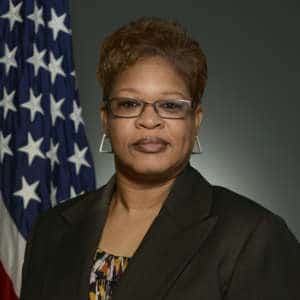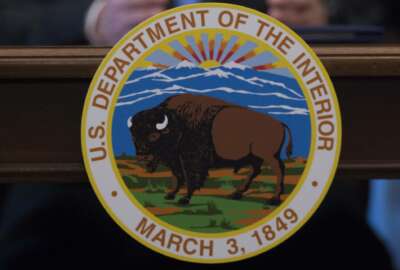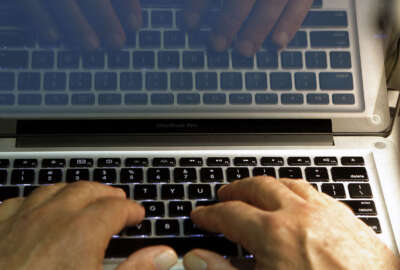
As federal IT improves diversity, some still see dearth of women in cyber positions
Not everyone is seeing an even distribution when it comes to women in federal IT. Some areas of technology remain a boys’ club.
The federal government has made some progress in the last couple of years when it comes to improving diversity in the technology field. But not everyone is seeing an even distribution, as some areas of federal tech jobs remain a boys’ club.
“In cybersecurity, we are not represented at all,” said Wanda Jones-Heath, deputy chief information security officer and chief of the cybersecurity division for the Office of Information Dominance and Chief Information Officer at the Air Force. “I recently went to a roundtable with about 20 security folks there. I was the only female, and the only African-American as well. So when I walked in the room, I was shocked and I was not expecting it. But one thing I would say is once you get over the shock, you have to be on top of your game.”
And that’s a problem, she said, because diversity brings different perspectives, which could lead to better solutions.

“I think because we don’t have a lot of diversity, we may miss out on a lot of opportunities to get different opinions,” Jones-Heath said at a May 2 AFCEA Women Technology Leaders in IT panel. “When you’re in a male-dominated career field, you hear — I tend to hear one side. I am more analytical, but I also can talk to business. … We look at it from a whole perspective where we think about it, then we talk about it. I think if we had more diversity, more different backgrounds, not necessarily technologists, you’ll get the end-to-end response that we need in order to move the government forward as a whole.”
And Jones-Heath isn’t the only one who has come to this conclusion.
“A recent Harvard study found that one of the best ways to boost their ability to transform themselves and their products is by involving women and having a culturally diverse team,” Federal CIO Suzette Kent said last month. “Another study looked at Fortune 500 companies and showed teams with equal numbers of men and women were more likely to be creative, share knowledge and fulfill the team’s objectives.”
Kent also said, in the federal government, women make up 40 percent of the IT and cyber workforce.
But according to the Office of Personnel Management’s Federal Human Resources Data tool, Fedscope, 23,475 women work in IT out of a total of 84,886 federal workers in IT, as of December 2017. That’s less than 28 percent.
However, part of the problem is that the definition of what constitutes a cybersecurity position is changing. OPM released new instructions in January 2017 for agencies to assign codes to their cybersecurity positions. The new guidance recognizes nine categories and 31 specialty areas of cyber functions. Agencies were supposed to have finished coding these positions by 2018. But some departments, like DHS, have found that difficult.
The numbers are shifting, DHS Chief Human Capital Officer Angela Bailey said, as the department constantly changes what it means for a position to be a cyber job. And as the administration makes cybersecurity more of a priority, DHS and other agencies will continue to alter the definition.
So pinpointing a precise number of federal employees who work in cyber at all is difficult. Determining how many of them are women is next to impossible.
But Jones-Heath isn’t the only one who’s described these inequities either.
Adriane Burton, the chief information officer at the Department of Health and Human Services’ Health Resources and Services Administration, said in January that she’s seen more women taking jobs in technology, but said she hasn’t seen that diversity spread evenly across her agency.
“Especially in the IT field, I see a lot of women programmers. I don’t see a lot of women network engineers and network security,” Burton said. “I know that’s been a challenge for our organization in term of hiring for women in those particular positions. But diversity definitely is important. As a manager, you want to make sure you are looking and evaluating diversity within your organization on a regular basis.”
Part of the problem, Jones-Heath said, lies with the career field itself. Women aren’t often encouraged to go into the more technical fields.
“When I was in college, I majored in computer science,” she said. “When I got into the hard classes, the engineering classes, the math classes, the comp-sci classes, there were not many women. When I graduated, in my class, there were two females, one African-American male, and the rest were either foreign students or predominately white. So I think, from the beginning, we just aren’t going to those career fields.”
That’s why, she said, she spends some of her time volunteering in her community, encouraging young girls, including her daughters, to go into technology. And she frequently goes to recruiting events.
“I go out to the colleges,” Jones-Heath said. “I was recruited for an intern position, starting out in the government, so I always go back and try to talk to females.”
And she said that what she sees in these girls and young women gives her hope that soon, the dynamic will change.
Copyright © 2025 Federal News Network. All rights reserved. This website is not intended for users located within the European Economic Area.
Daisy Thornton is Federal News Network’s digital managing editor. In addition to her editing responsibilities, she covers federal management, workforce and technology issues. She is also the commentary editor; email her your letters to the editor and pitches for contributed bylines.
Follow @dthorntonWFED
Related Stories






